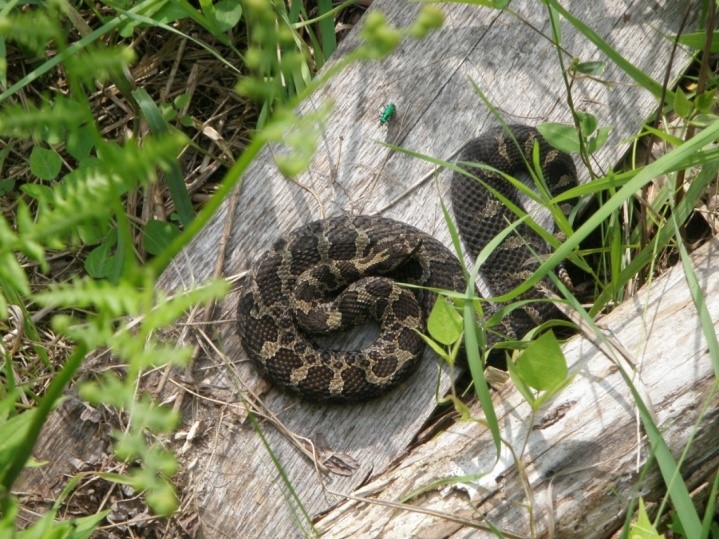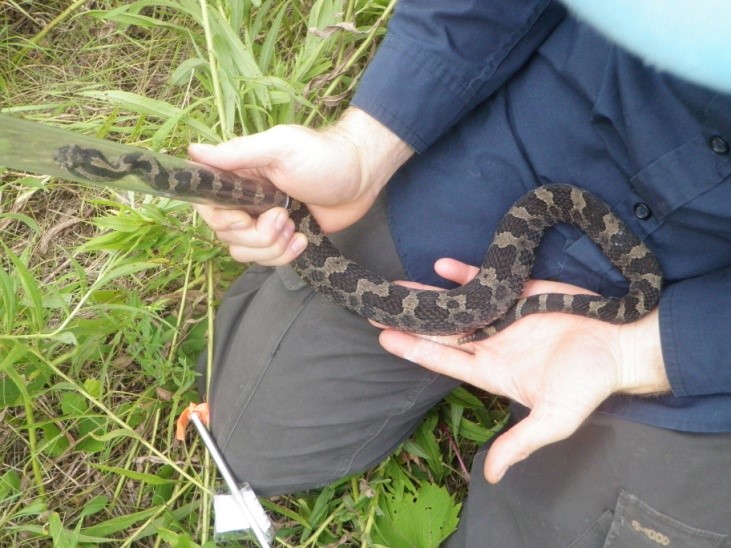
Figure 1. A beautiful gravid female Massasauga, from the Ojibway population in the Windsor/LaSalle region, basking at her gestation site in 2013.
Monitoring surveys are ongoing in Windsor and LaSalle Ontario targeting one of the last populations of Eastern Massasaugas in Canada's Carolinian zone (the Ojibway Prairie population). Between late April and late August 2014 we conducted standardized detection surveys to better estimate detection probability and occupancy of this endangered and declining population. We are monitoring a total of 14 two-hectare sites within the historical range of the species. Sites were chosen based on the predominance of suitable open habitat.
At the end of the field season, Butler’s Gartersnakes and Eastern Foxsnakes (the two other Species at Risk snakes in the study area) were detected at 7 and 8 sites, respectively, whereas Eastern Massasaugas were only detected at three sites. These are the same three sites where the species was detected in 2013, all of which are in close proximity to each other. The total area occupied by this population is estimated at 35 ha (includes the three occupied study sites and the intervening natural area). Unfortunately, no gravid (i.e., pregnant) females were found this year, in comparison to three last year.
In the absence of management interventions, the steady decline in distribution and abundance strongly suggests the population will become extirpated in the near future. A feasibility study on the recovery of this population has been completed and submitted to government officials as per the National Recovery Strategy. One of our next steps is to request approval from the province to begin a long-term population augmentation program. This could include ‘reinforcing’ the Ojibway population with translocated Eastern Massasaugas from genetically similar, and relatively abundant, populations in Michigan.
On behalf of Wildlife Preservation Canada,
Jonathan Choquette, Project Coordinator

Figure 2. Safely handling an adult male Eastern Massasauga from the Ojibway population using a snake hook and a snake tube.
